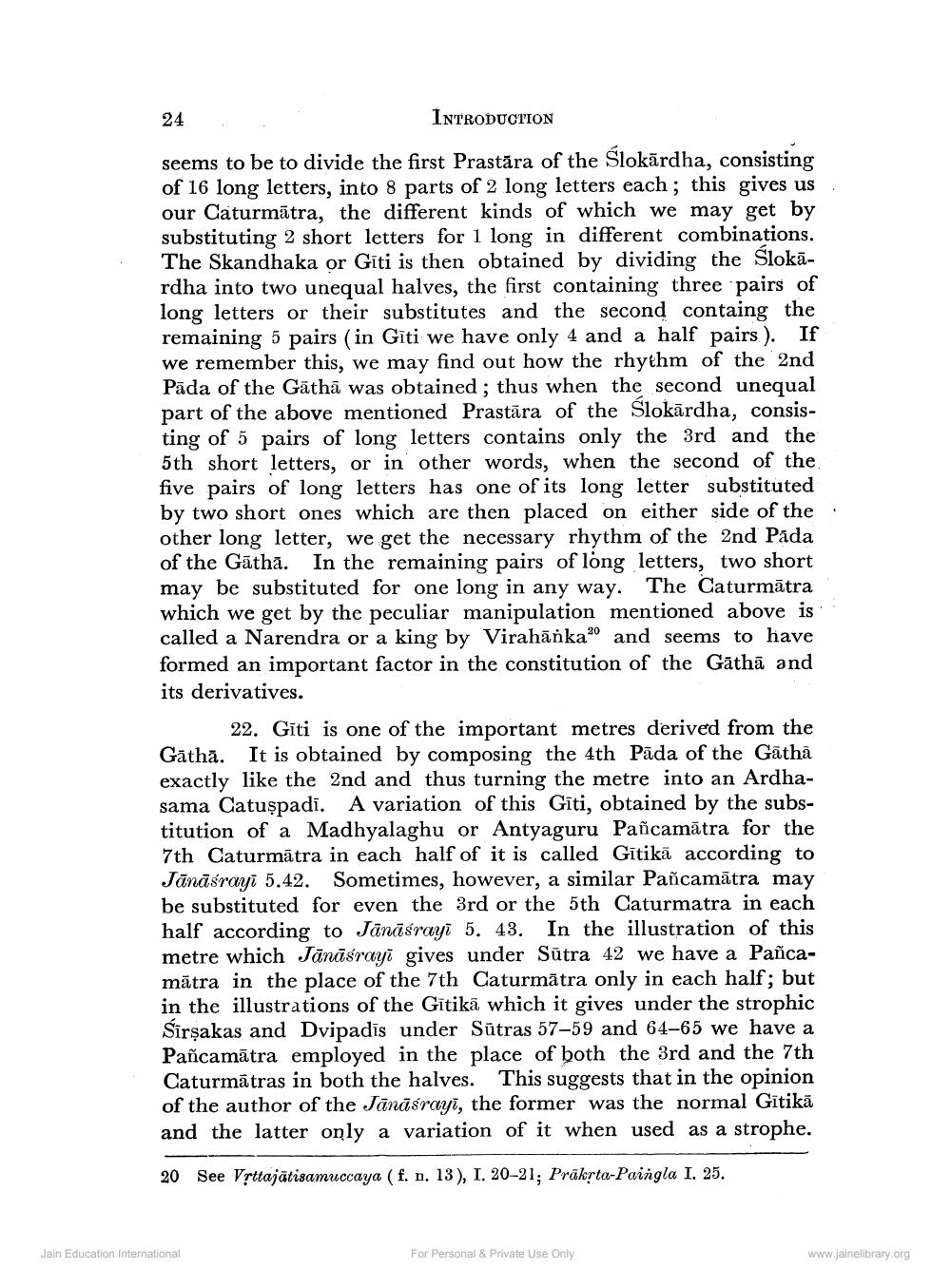________________
24
INTRODUCTION
seems to be to divide the first Prastāra of the Slokārdha, consisting of 16 long letters, into 8 parts of 2 long letters each ; this gives us our Caturmātra, the different kinds of which we may get by substituting 2 short letters for 1 long in different combinations. The Skandhaka or Giti is then obtained by dividing the Slokārdha into two unequal halves, the first containing three pairs of long letters or their substitutes and the second containg the remaining 5 pairs (in Gīti we have only 4 and a half pairs). If we remember this, we may find out how the rhythm of the 2nd Pāda of the Gāthā was obtained; thus when the second unequal part of the above mentioned Prastāra of the Slokārdha, consisting of 5 pairs of long letters contains only the 3rd and the 5th short letters, or in other words, when the second of the five pairs of long letters has one of its long letter substituted by two short ones which are then placed on either side of the other long letter, we get the necessary rhythm of the 2nd Pada of the Gātha. In the remaining pairs of long letters, two short may be substituted for one long in any way. The Caturmātra which we get by the peculiar manipulation mentioned above is called a Narendra or a king by Virahāńkaao and seems to have formed an important factor in the constitution of the Gathā and its derivatives.
22. Gīti is one of the important metres derived from the Gāthā. It is obtained by composing the 4th Pāda of the Gāthā exactly like the 2nd and thus turning the metre into an Ardhasama Catuspadi. A variation of this Gīti, obtained by the substitution of a Madhyalaghu or Antyaguru Pañcamātra for the 7th Caturmātra in each half of it is called Gītikā according to Jānāśrayi 5.42. Sometimes, however, a similar Pañcamātra may be substituted for even the 3rd or the 5th Caturmatra in each half according to Jānāsrayi 5. 43. In the illustration of this metre which Jānāšrayi gives under Sūtra 42 we have a Pañcamātra in the place of the 7th Caturmātra only in each half; but in the illustrations of the Gītikā which it gives under the strophic Sirsakas and Dvipadīs under Sūtras 57-59 and 64-65 we have a Pañcamätra employed in the place of both the 3rd and the 7th Caturmätras in both the halves. This suggests that in the opinion of the author of the Jānäsrayi, the former was the normal Gitikā and the latter only a variation of it when used as a strophe.
20 See Vrttajätisamuccaya (f. n. 13), I. 20-21; Prūksta-Paingla I. 25.
Jain Education International
For Personal & Private Use Only
www.jainelibrary.org




